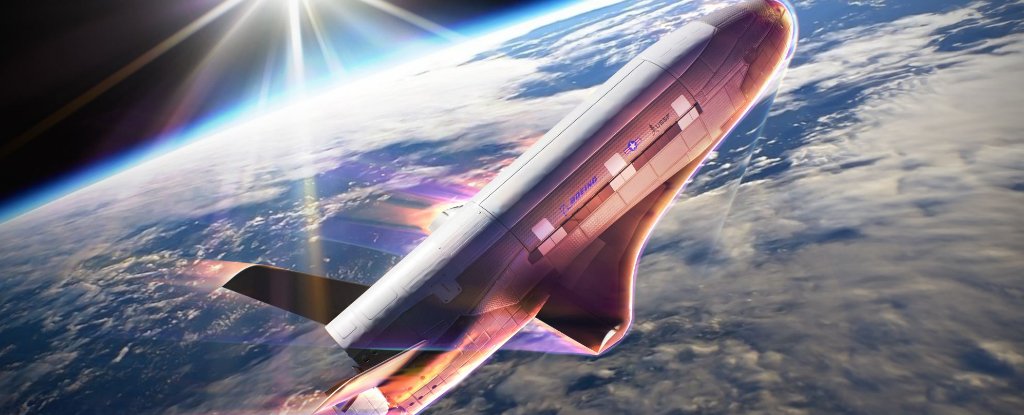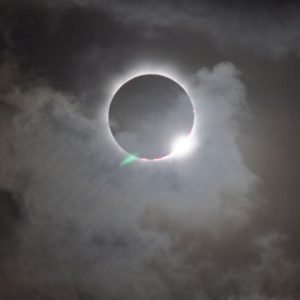
The X-37B Orbital Test Vehicle (OTV) has been shrouded in mystery since its maiden flight in 2011.
Designed by Boeing and operated by the US Space Force (USSF), this remotely operated, reusable space plane is designed to operate in Low-Earth Orbit (LEO), 240 to 800 kilometers (150 to 500 miles) above the Earth, and test reusable vehicle technologies that support long-term space objectives.
On December 29th, 2023, the X-37B began its seventh mission (OTV-7) and has reportedly been conducting experiments on the effects of space radiation and testing Space Domain Awareness (SDA) technologies.
As part of this mission, the X-37B will soon begin executing a series of novel maneuvers to change its orbit around Earth. These maneuvers will consist of the spacecraft brushing against Earth’s upper atmosphere to shed speed and lower its orbit without expending much fuel – a technique known as “aerobraking.”
This is the first time the X-37B has performed such a maneuver, which will help it evade detection by potentially hostile nations and perform undetected low passes over Earth during future missions.
According to a statement by the USSF, this latest maneuver leverages six successful missions in LEO and decades of lessons learned from missions to the Moon and Mars. In 1997, the Mars Global Surveyor (MGS) orbiter used its solar panels as “wings” to control its passage through Mars’ tenuous upper atmosphere and lower its orbit over several months.
More recently, aerobraking has been used by the Mars Odyssey in 2001, the Mars Reconnaissance Orbiter in 2006, and the ESA’s ExoMars Trace Gas Orbiter in 2017-2018.
“This novel and efficient series of maneuvers demonstrates the Space Force’s commitment to achieving groundbreaking innovation as it conducts national security missions in space,” said Secretary of the Air Force Frank Kendall.
“This first-of-a-kind maneuver from the X-37B is an incredibly important milestone for the United States Space Force as we seek to expand our aptitude and ability to perform in this challenging domain,” added Chief of Space Operations Gen. Chance Saltzman. “The success is a testament to the dedication and perseverance of the team.”
Beyond these experiments, very little is known about the X-37B’s capabilities and purpose. However, during the Aspen Security Forum in 2019, former U.S. Air Force (USAF) Secretary Heather Wilson explained how the X-37B capabilities allow it to avoid detection, saying:
“[The X-37B is] fascinating [because it] can do an orbit that looks like an egg and, when it’s close to the Earth, it’s close enough to the atmosphere to turn where it is. Which means our adversaries don’t know – and that happens on the far side of the Earth from our adversaries – where it’s going to come up next. And we know that that drives them nuts. And I’m really glad about that.”
As Jonathan McDowell – an astronomer and astrophysicist at the Harvard-Smithsonian Center for Astrophysics – told Military.com in an interview at the time:
“[Wilson’s comments may shed light on] a previously secret orbit-related capability. The dip into the atmosphere causes a change in the timing of when it next comes overhead. So [trackers’] predictions are off, and [they] have to search for it all over again. Even a timing change makes more work for [adversaries] than just being able to use the existing orbital prediction.”
Once the aerobrake maneuver is complete, the X-37B will resume its tests and experiments until they are fulfilled. As the USSF indicated before the launch of the OTV-7 mission, these tests include operating in new orbital regimes, experimenting with future SDA technologies, and investigating the radiation effects on plant seeds provided by NASA – the “Seeds-2” experiment.
The spacecraft will also eject some of its service module components in accordance with recognized standards for space debris mitigation. At this point, the vehicle will de-orbit and return to Earth as it has during its six previous missions.
This article was originally published by Universe Today. Read the original article.





